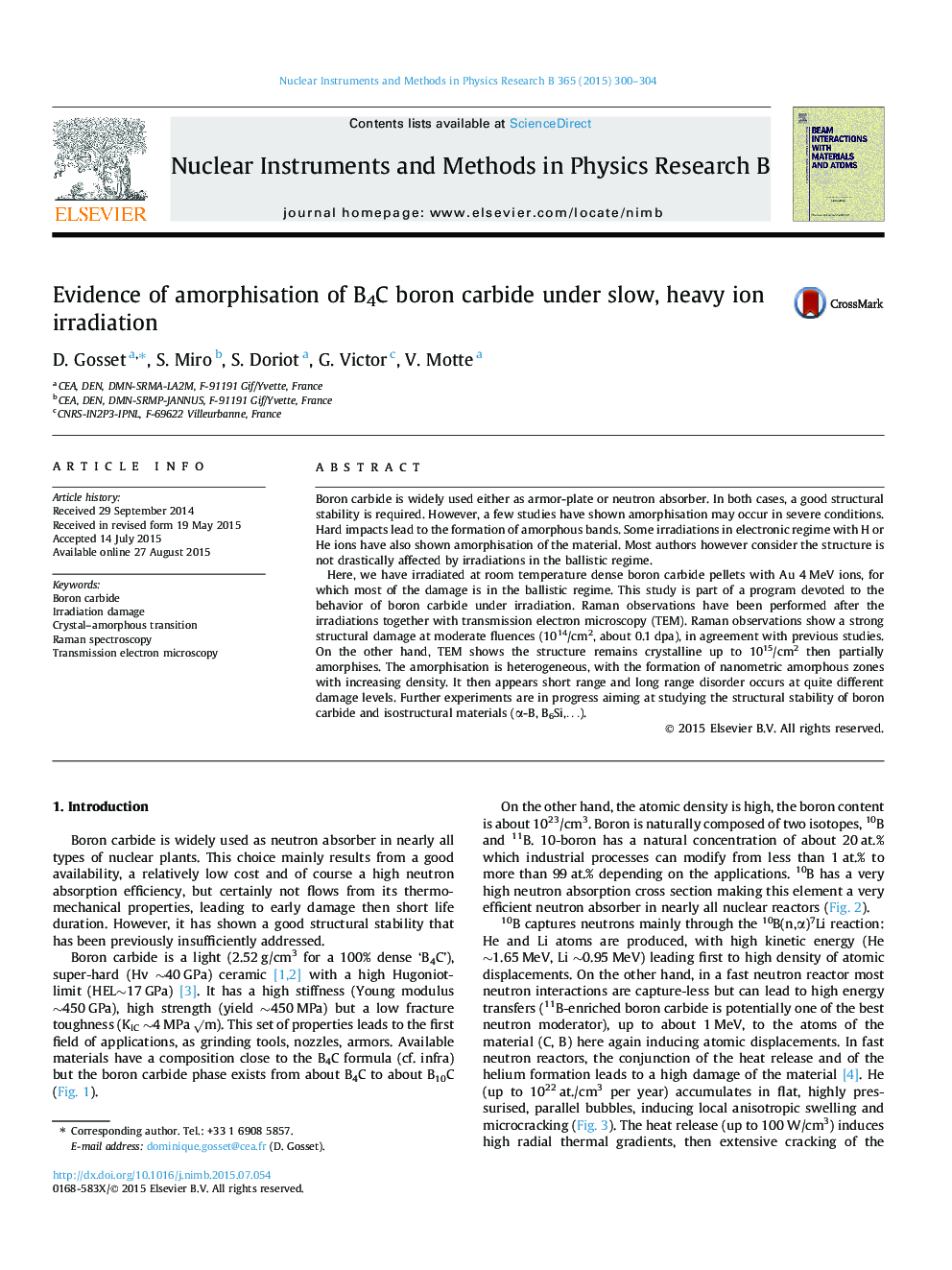| Article ID | Journal | Published Year | Pages | File Type |
|---|---|---|---|---|
| 1682435 | Nuclear Instruments and Methods in Physics Research Section B: Beam Interactions with Materials and Atoms | 2015 | 5 Pages |
Boron carbide is widely used either as armor-plate or neutron absorber. In both cases, a good structural stability is required. However, a few studies have shown amorphisation may occur in severe conditions. Hard impacts lead to the formation of amorphous bands. Some irradiations in electronic regime with H or He ions have also shown amorphisation of the material. Most authors however consider the structure is not drastically affected by irradiations in the ballistic regime.Here, we have irradiated at room temperature dense boron carbide pellets with Au 4 MeV ions, for which most of the damage is in the ballistic regime. This study is part of a program devoted to the behavior of boron carbide under irradiation. Raman observations have been performed after the irradiations together with transmission electron microscopy (TEM). Raman observations show a strong structural damage at moderate fluences (1014/cm2, about 0.1 dpa), in agreement with previous studies. On the other hand, TEM shows the structure remains crystalline up to 1015/cm2 then partially amorphises. The amorphisation is heterogeneous, with the formation of nanometric amorphous zones with increasing density. It then appears short range and long range disorder occurs at quite different damage levels. Further experiments are in progress aiming at studying the structural stability of boron carbide and isostructural materials (α-B, B6Si,…).
